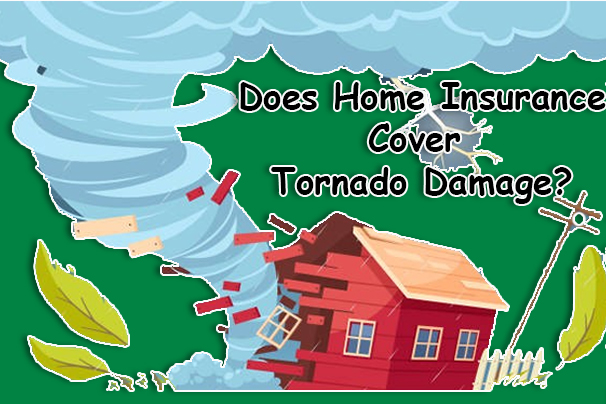Does Home Insurance Cover Tornado Damage? Each time a tornado occurs, it causes so much damage to properties. Although not as much damage as other severe weather events, such as hurricanes and wildfires. Heavy tornadoes can destroy a wide area, trees, businesses, and even homes. In times like this, recovering from losses in your home can be financially difficult, but does home insurance cover tornado damages?

Most times, tornadoes occur during tornado seasons, but it depends on the time and your home location. There are some locations where the occurrence of a tornado is frequent, while there are others where it’s not. If you have home insurance, and your property is damaged during a tornado, your insurance may cover the damage.
If your home gets damaged due to a tornado, you need to check if your home insurance covers the damages it makes and what types of damages it covers. However, to gain knowledge about how this works, read through my write-up for all the information you need.
Does Home Insurance Cover Tornadoes?
A home insurance policy will cover tornado damage to a home and other wind-related issues. Generally, this coverage covers wind, tree, and rain damage to homes. It also covers mold damage but does not protect against floods. To add flood insurance coverage to your home insurance, you must purchase additional coverage. This additional coverage may be a good idea if ever a tornado causes a flood in your home.
What Home Insurance Policy Can Cover Tornadoes?
Home insurance is broken into three different coverage types. These types of home insurance coverage are:
Dwelling Coverage
This coverage covers the physical structure of your home. If ever your home gets damaged due to a tornado, this coverage will cover the rebuilding of your home. Dwelling coverage encompasses not only the home’s structure but also other structures like a deck or garage. It covers detached structures like a fence or sheds under “other structures coverage.” However, this insurance has limits based on how much it costs to rebuild your home.
Personal Property Coverage
This home insurance coverage covers payments for replacements or repairs to your belongings damaged due to a tornado. These properties include items like clothes, furniture, electronics, jewelry, kitchen appliances, rugs, toys, and even artwork on your walls. Typically, a specific proportion of the dwelling coverage is allocated for personal belongings insurance coverage.
Additional Living Expenses Coverage
This coverage covers the expenses for bills incurred by you if you need to leave your home due to tornado damage. This includes meals, hotel bills, and other costs. “Loss of use” is another term for this coverage. Additionally, a specific percentage of your home insurance is covered.
What to Do After a Tornado
After the occurrence of a tornado, you need to take a few steps to make your claim process easier and faster. First, you need to check out how much damage is done and write it down. After doing that, you can follow the below steps to guide you through it.
Secure Your Property
Immediately after a tornado occurs, you must secure your properties to prevent more damage. This may include boarding up openings and closing exposed areas; this can help your insurance claim.
Accessing and Addressing Safety Hazards
Safety is more important than any other thing. Before recovery efforts, you need to identify and address hazards like gas leaks, electrical issues, and others to make sure the area is ok for you and your family.
Itemizing Damages and Losses
After your property is safe, write down the extent of damage that was made by making a well-detailed list of affected items and areas and taking pictures and videos. This process will help you a lot when filing claims.
How to File a Tornado Insurance Claim
If your home is damaged because of a tornado, the following are steps to file a claim on your home insurance.
- Check your home for any structural issues. Do not stay in a damaged building unless you are instructed to.
- Avoid downed power lines.
- Be conscious of debris, exposed nails, and broken glasses.
- In cases where you suspect your home is damaged, turn off electrical power, propane tanks, and natural gas.
- Take pictures and videos of your home’s damage, both inside and out.
- Make use of your home inventory to consider what items would need repairs or replacement.
- If you can’t live in your house due to the damages, keep safe the receipt of all expenses like meals and hotel bills.
To assist you with the claim procedure, you might need to employ a public adjuster if the damage to your house is unimaginable. However, you will need to inform your insurance company on time and disclose every piece of information concerning the event.





